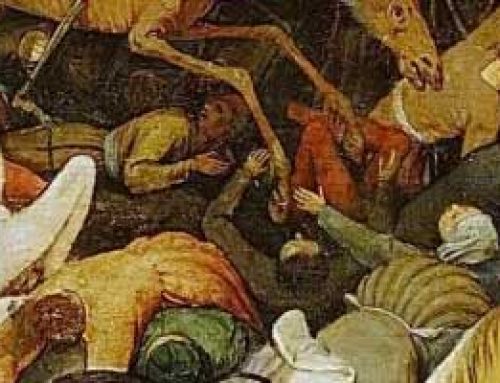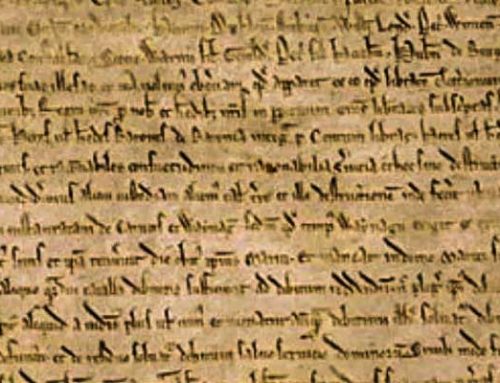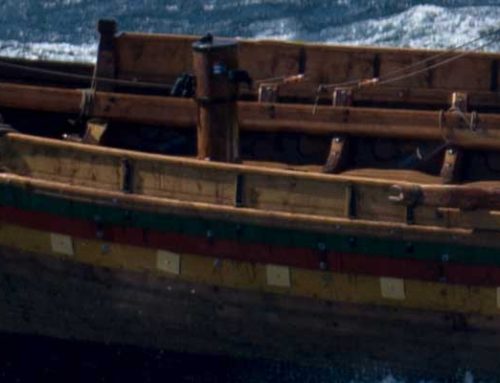Viking raids into France ravaged the countryside and led to the plundering of Paris in 845. In 910, the Frankish king was Charles the Simple. His name was not an insult. “Simple” meant straightforward. Charles made an alliance with a group of Vikings. The king arranged the marriage of his daughter to Rollo, the leader of the Viking raids. The king also granted the Vikings land in northwest France. These Vikings were called Normans, meaning men from the north. While there are no Viking outposts in France today, the land they settled is still known as Normandy. Rollo and his warriors adopted Christianity and French customs but continued their raids — now ranging as far away as Italy.
Great Britain is an island off the northwest coast of continental Europe – what we might call the mainland of Europe. In the fifth century, two Germanic cultures, the Angles and the Saxons, conquered the native Britons after the Roman army retreated from the island. Anglo-Saxon King Edward the Confessor died in 1066, causing a fight for the crown. William the Conqueror, a descendent of Rollo, the Viking raider, would cross the narrow English Channel and bring the fight to England in 1066.
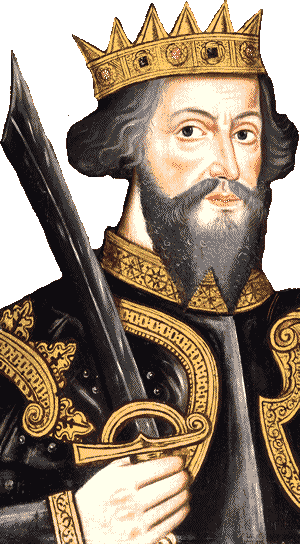
William_the_Conqueror
William the Conqueror was the first Norman King of England, reigning from 1066 until his death in 1087.
The Anglo-Saxon nobles chose Harold Godwinson as the next king. Godwinson’s army and fleet prepared for an expected Norman invasion, but upon learning that King Harold Hardrada of Norway would invade England, Godwinson and his army marched north to meet them. Godwinson’s army surprised the Norwegians at the Battle of Stamford Bridge. The English army killed the Norwegian king and defeated his army. But the cost to the Anglo-Saxons was high. Godwinson lost over 5000 soldiers, including his brother and closest advisor, Tosig. Three days after their victory, Godwinson learned that the Norman invasion had begun.
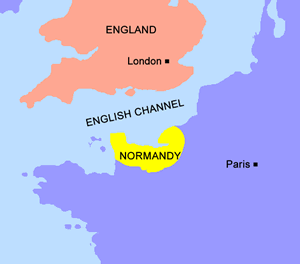
Normandy_map
Normandy is in northwest France.
With Godwinson and his army away, William, the Duke of Normandy, crossed the Channel with his army. The Normans met with little resistance, so they constructed a fortified castle in the British seaside village of Hastings. From that base, the Normans pillaged the English countryside.
Harold Godwinson’s tattered army returned from their battle with Norway to face the Normans, but he was forced to keep some of his forces in the north to deal with the Norwegians. Godwinson quickly assembled a new army of local citizens, but the recruits were poorly armed and trained — no match for the well-prepared invaders. William’s Norman army killed Godwinson and subdued the English forces in the famous Battle of Hastings.
The Duke of Normandy was now King William of England, also known to history as William the Conqueror. For the next three hundred years, England would be ruled by kings who did not speak English. The Normans imported French-speaking artisans, cooks, and scholars. We can see in the English spoken today the high status of the French Normans and the low status of the English field hands. For instance, we frequently refer to animals in the field by their English names – cow, ox, sheep – while food from those animals – beef, veal, and mutton – has French names.
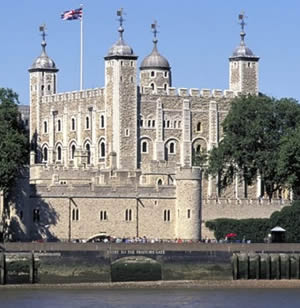
Tower_of_London
The Normans built the imposing Tower of London to protect the capital, but the tower also served as a reminder to the English people of the power of the Normans.
Beyond favoring French speakers, William seized land from English nobles and forced all landowners to swear an oath of loyalty. The Normans built the imposing Tower of London to protect the capital, but the tower also served as a stern reminder to the English people of the power of the Normans. William wanted a complete accounting of the land he now controlled, so he ordered a survey of the population and wealth of England. The result was what we now call the “Domesday Book” of taxation. Both the Tower of London and the original Domesday Book still exist today.
England and France would become bitter rivals by 1337. They fought one another in a series of conflicts later called the “Hundred Years’ War.” The two kingdoms would be fierce rivals competing for new colonies in the Americas, the Middle East, and Africa. England and France did not truly become allies again until the last century, when they combined forces to defeat Germany and other nations in two World Wars.
Resources
Download this lesson as Microsoft Word file or as an Adobe Acrobat file.
Listen as Mr. Dowling reads this lesson.
Mr. Donn has an excellent website that includes a section on the Middle Ages.
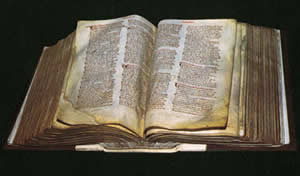
Domesday_Book
William the Conqueror ordered that a census be taken in 1086 so he could tax the people. The record were kept in the Domesday Book.


